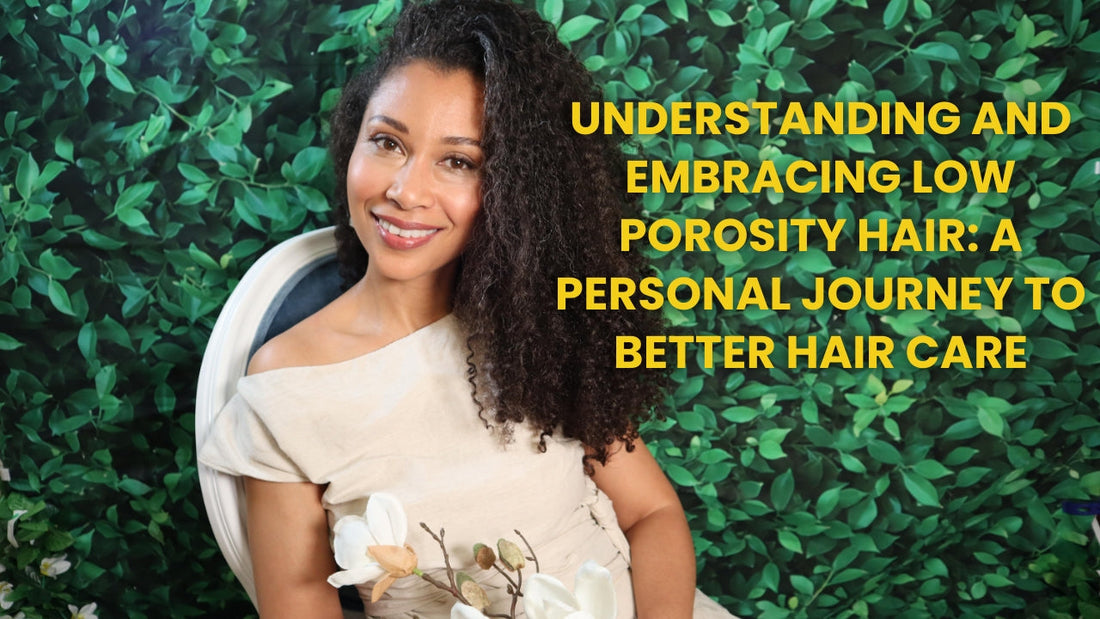When I first discovered that my hair was naturally low porosity, it felt like a revelation. For many years, I thought my hair was medium porosity, largely due to my past hair coloring habits. Here's a detailed look into this journey, why it's crucial to understand hair porosity, and the changes I've made to my hair care routine. If you're struggling with similar issues, or just curious about hair porosity, this blog post is for you!
What is Hair Porosity?
Hair porosity refers to your hair's ability to absorb and retain moisture. It’s determined by the structure of your cuticle, the outer layer of your hair, and it influences how moisture moves in and out of your hair strand. There are three types:
- Low porosity: The cuticle scales are tightly packed and flat, making it harder for moisture to enter.
- Medium porosity: Often considered healthy hair with a regular shine, it allows for adequate moisture retention.
- High porosity: The cuticle scales are raised or even damaged, allowing moisture in but also losing it quickly.

Discovering My Hair’s True Nature
For much of my life, I believed I had medium porosity hair, primarily because I regularly colored it. It's a common occurrence; coloring can temporarily alter your hair’s porosity level. When I stopped dyeing my hair, I had to reassess my entire hair care routine.
How I Realized My Hair Was Low Porosity
The big realization came after I decided to embrace my natural hair color. Initially, I noticed that my hair wasn’t absorbing water as well as it used to. This led me to rethink my hair care process since my old methods weren't effective anymore.
"I big chopped my hair and decided I wasn't going to color it anymore. That's when I realized my hair was low porosity."
The Science Behind Low Porosity Hair
Low porosity hair is characterized by its tightly shut cuticles. Imagine a strand of hair like a roof with shingles: low porosity means these shingles are tightly packed and don't lift easily. This makes it difficult for water and products to penetrate and moisturize the hair.
Common Characteristics of Low Porosity Hair
- Water beads up: Water may simply bead and run off the hair instead of absorbing.
- Slow drying time: It can feel strange since moisture doesn't enter well, but it also means drying takes a long time.
- Tends to build up: It's easy to get product build-up because it just sits on the cuticle surface.
Cleansing Low Porosity Hair
A pivotal change in my routine was shifting to a cleansing shampoo to detoxify my hair from product build-up. Here's what I recommend:
- Use a detoxifying shampoo: I switched to a cleansing shampoo bar which I use every single wash day.
- Avoid moisturizing shampoos: Low and no poo shampoos aren’t as effective due to their inability to deeply cleanse.
"I wouldn't recommend low or no poo hydrating shampoos if you have low porosity hair."
To Deep Condition or Not?
It's a hot debate online, and here's where I stand: deep conditioning isn't beneficial for my low porosity hair. I found that deep conditioners simply sat on my hair rather than penetrating it.
"When I deep conditioned with a deep conditioner, my hair was not absorbing my products."
Adapting to a New Routine
Conditioner Change
Switching to a lightweight, hydrating conditioner was a game-changer. You want a product that softens without weighing down the hair:
- Hydrate and Renew: A lighter conditioner helps detangle and soften the hair without sealing the cuticle too soon.
Styling Tips for Low Porosity Hair
For styling, using more water was one of the biggest revelations. Here's what I've learned:
- Soaking wet application: Ensure your hair is dripping wet when applying products to help absorption.
- Choose flexible holding products: Use gels or jellies that provide a flexible hold to enhance curls rather than crunchy textures.
Final Thoughts and Helpful Products
Navigating the world of hair care can be daunting, especially when your hair type changes. But understanding your hair's porosity can make an enormous difference. The key changes like choosing the right shampoo and conditioner, altering the amount of water during styling, and embracing lightweight products have transformed my hair care routine.
"Whatever porosity your hair is, always heat dry by sitting under a hooded dryer or using a diffuser."

Moving forward, embrace the journey of learning and experimenting—your hair will thank you for it!



